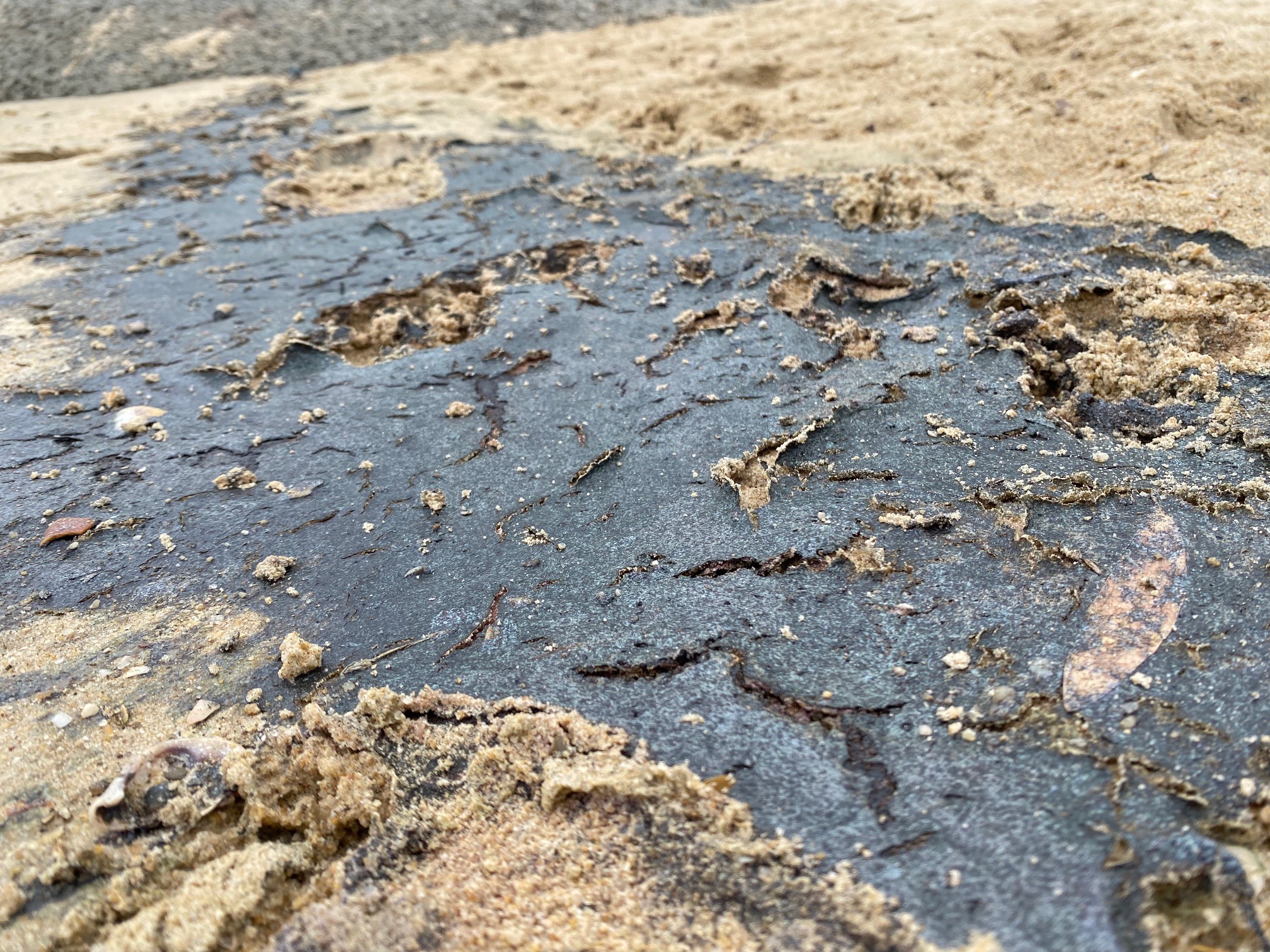A sludge that washed up on the Maroochy River banks and left a grey-black crust on the sand has been put down to blue-green algae.
Holidaymakers at Cotton Tree saw the sludge wash up on the high tide last Monday.
It appeared on the Maroochy North Shore on Wednesday morning’s high tide, lapping the shoreline and extending 3m-4m out from the river’s edge.
Within hours, the sludge dried into a dark grey crust about 2mm thick that had an unpleasant smell, as did the still water inside the sandy spit that has developed in front of the Cotton Tree Caravan Park.
The Sunshine Coast Council said material was trichodesmium, which are cyanobacteria, otherwise known as blue-green algae.
Trichodesmium is also known as whale sperm, whale food, sea scum and sea sawdust.
It is mostly found in waters between 20 degrees and 34 degrees, and often nitrogen-poor waters.
Help keep independent and fair Sunshine Coast news coming by subscribing to our FREE daily news feed. All it requires is your email at the bottom of this article.
A council fact sheet says trichodesmium blooms are not uncommon on the Sunshine Coast.
“The blooms can occur throughout the year but are most common between August and January when they can form very large slicks,” it says.
“Blooms are typically a rusty-brown colour, however some variations in colour may occur with grey, green and purple streaks being observed.”
The fact sheet says the blooms are mostly harmless but can kill animals if they deplete oxygen.
A dead fish was found at North Shore on the morning the sludge was spotted.

The fact sheet says that trichodesmium blooms can produce toxins if allowed to stagnate, as indicated by a change in water colour, and will turn the water from a rust colour to green and even pink.
It says the slicks can become beached in certain conditions.
Unitywater confirmed there had been no incidents at its Fisherman Road plant that would have released the material into the river.
“Our Maroochydore Wastewater Treatment Plant has been operating as it should and there have been no overflows or releases other than our normal operations where treated wastewater is discharged to the environment,” a spokesperson said.
“As a precaution, we sent an environmental team to make an assessment at the sites described, as well as three additional sites – five in total. The matter is not consistent with a wastewater overflow, with no evidence of wastewater odour, rags or solids present.”





